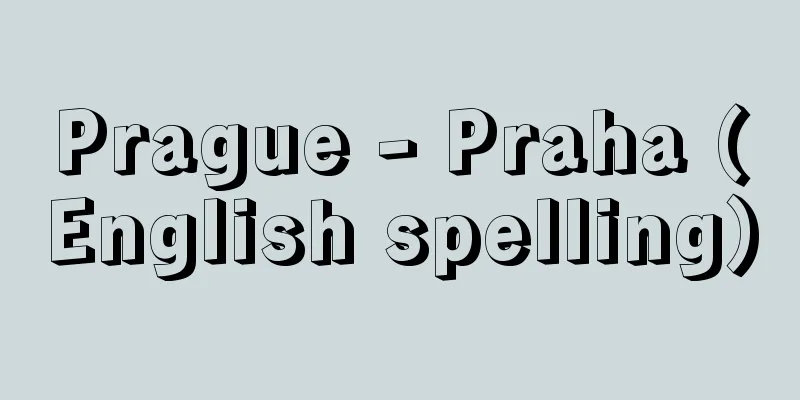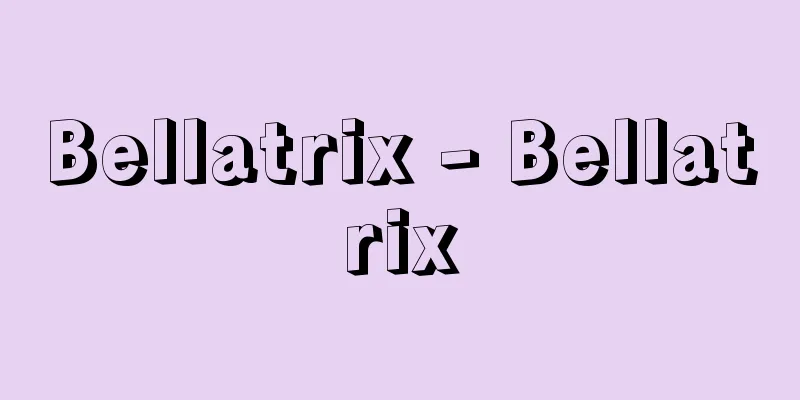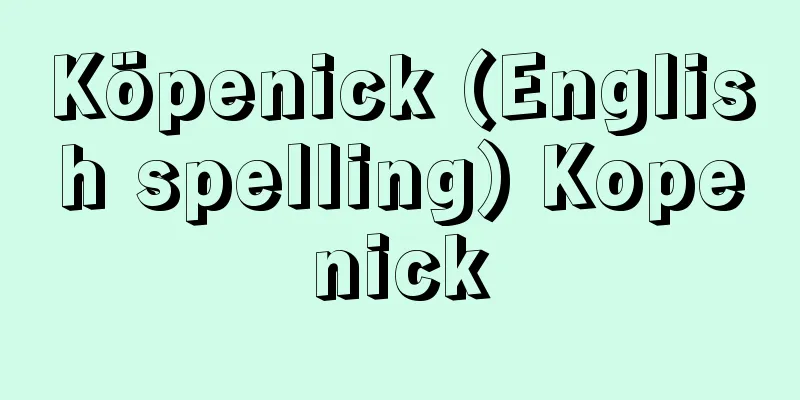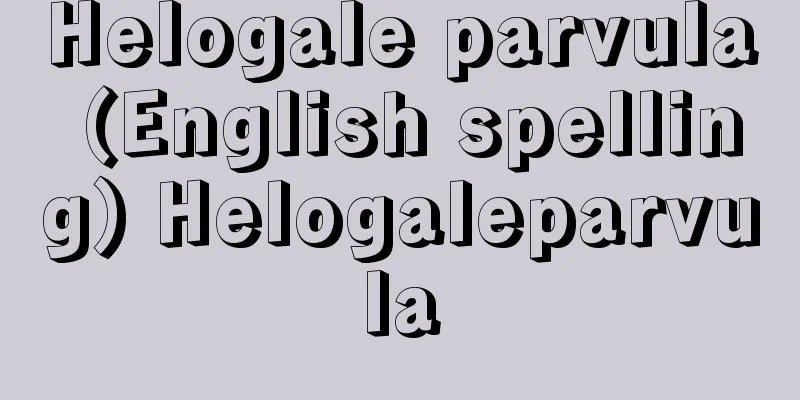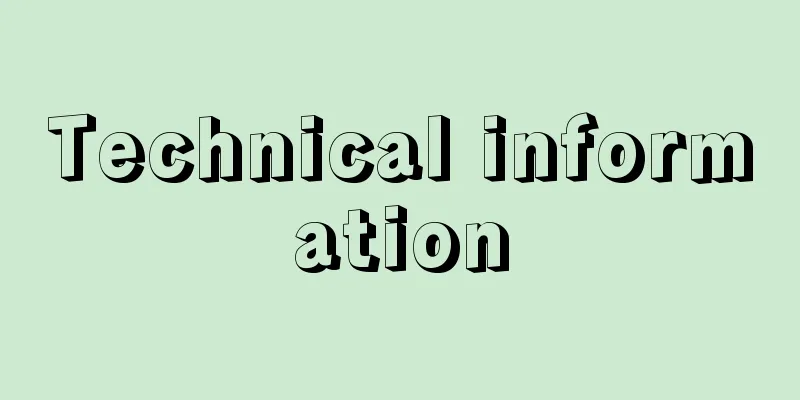North Atlantic Treaty Organization (English: North Atlantic Treaty Organization)
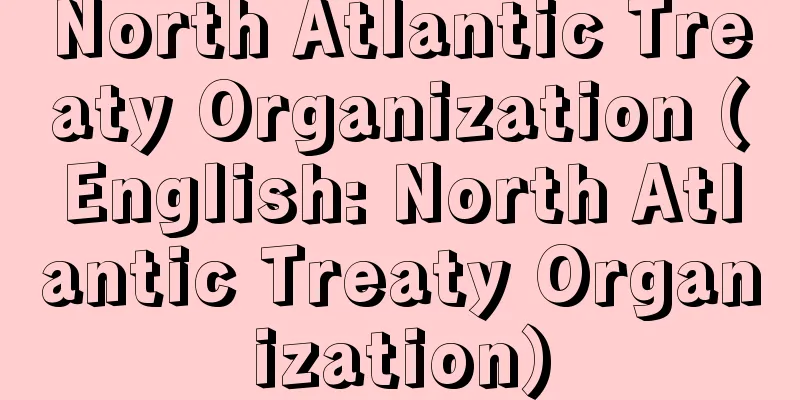
|
An alliance based on the North Atlantic Treaty. Its abbreviation is NATO. It was established in 1949 by 12 countries: 10 Western European countries (Belgium, Denmark, France, Iceland, Italy, Luxembourg, the Netherlands, Norway, Portugal, and the United Kingdom), as well as the United States and Canada. After the Cold War, countries from the former Eastern Bloc joined, and as of January 2018, the number of member countries is 29. Its headquarters is in Brussels (originally in Paris). [Tsuruoka Michito January 19, 2018] From the Cold War to the Post-Cold WarAs the Cold War in Europe progressed, the North Atlantic Treaty (Washington Treaty) was signed in April 1949, forming an alliance between the United States and Western European countries. Later, in 1950, the outbreak of the Korean War marked the intensification of the Cold War, and NATO was further reorganized, including the establishment of an integrated military organization. NATO's core lies in the defense of Western European countries, deterrence against the Soviet Union, and cooperation between the United States and Europe, and its foundation was Article 5 of the North Atlantic Treaty, which stipulated collective defense (mutual assistance). For a long time during the Cold War, NATO's challenge was to strengthen its conventional forces, but in the end, it was never able to become equal to the Soviet Union, at least in terms of quantity. To make up for its inferiority in conventional weapons against the Soviet Union, NATO relied more heavily on nuclear forces during the Cold War. The 1950s' "massive retaliation strategy," which called for a large-scale nuclear counterattack against even a small-scale conventional invasion, was derived from the reality of inferiority in conventional weapons. NATO during the Cold War was also a textbook example of alliance politics. The history of debate over the credibility of extended deterrence, or whether the United States would really defend Europe, is as long as the history of NATO itself. There was doubt as to whether the United States would really sacrifice New York to defend Paris. Regarding how to respond to the Soviet Union, differences among allies between a hard-line approach and dialogue never disappeared. Furthermore, issues regarding burden sharing between the United States and Europe continue to this day. NATO is often called the strongest alliance in history, but it has by no means always been monolithic. Although it was not necessarily self-evident that NATO would continue to exist as the central security organization in Europe after the Cold War, it is true that NATO became a bastion of stability during the period of order change that followed the end of the Cold War. Even after the collapse of the Soviet Union, the future of the new Russia remained unclear, and relations with the United States were not eliminated. [Tsuruoka Michito January 19, 2018] Geographical and functional expansion after the Cold WarThe first thing that characterizes NATO's transformation after the Cold War is its geographical expansion, which means an increase in the number of member and partner countries. In 1999, NATO welcomed three countries, the Czech Republic, Hungary, and Poland, as members. They were the first former Eastern Bloc countries to join NATO. Prior to that, in 1994, the Partnership for Peace (PfP) was launched, which attempted to strengthen ties with NATO, including with neutral countries such as Austria and Finland. For countries aiming to join NATO, PfP was a waiting room, so to speak. After successive expansions, the number of member countries has expanded to 29 as of January 2018. The second is functional expansion. During the Cold War, NATO specialized in military security for territorial defense, but after the Cold War, it not only provided support for the democratization and modernization of the military in response to countries hoping to join, but also became deeply involved in peacekeeping (crisis management) activities, starting with Bosnia, from the mid-1990s onwards. Peacekeeping activities and the like have been called "non-Article 5 missions" in the sense that they are different from collective defense. These were big changes for NATO, but even so, NATO's activities in the 1990s were limited to Europe. The September 11, 2001 terrorist attacks fundamentally changed this situation. As a result, it was recognized that threats and challenges to international security had become truly global, and it was understood that not turning Afghanistan into a hotbed of terrorism was essential for the security of NATO countries. In addition, NATO invoked Article 5 of the North Atlantic Treaty for the first time in history in response to the 9/11 terrorist attacks, and provided support to the United States, including the dispatch of airborne early warning and control aircraft (AWACS). Since it had been thought that "NATO is the United States helping Europe," it could be said that invoking Article 5 in response to the 9/11 terrorist attacks was the opposite of what had been thought, but mutual support is the true nature of an alliance. [Tsuruoka Michito January 19, 2018] "Global NATO" and its limitationsAt the NATO Foreign Ministers' Meeting held in Reykjavik, the capital of Iceland, in June 2002, the principle of sending troops "wherever needed" was approved. This led to NATO taking over command of the International Security Assistance Force (ISAF) in Afghanistan the following year in 2003. Since then, the weight of ISAF has increased in NATO, and the direction of the alliance's transformation has been determined by its experience in Afghanistan. New challenges for NATO include counter-insurgency measures against insurgent forces, the link between development and security, and a "comprehensive approach" that includes cooperation with the United Nations, the World Bank, non-member countries, and even non-governmental organizations (NGOs). It was in the mid-2000s that the discourse of "Global NATO" gained momentum in response to operations in Afghanistan and cooperation there with non-member countries, including Japan. In transforming the alliance, the focus was on building forces capable of expeditionary missions, and prioritizing the strengthening of strategic airlift capabilities in preparation for further expeditionary missions. That is why the outbreak of the Russia-Georgia conflict in August 2008 came as a major shock. Collective defense, in the sense of territorial defense, suddenly reemerged as an urgent issue, causing widespread unrest among countries that felt the threat of Russia close to home, such as the Baltic states. A question that had not been considered for a long time had resurfaced: "Will NATO's collective defense really function in the event of an emergency?" In response, collective defense was put at the forefront in the Strategic Concept, NATO's highest-level strategic document, adopted at the Lisbon NATO Summit in November 2010. At the same time, a growing trend within NATO countries was one that could be described as "Afghanistan fatigue," a trend that sought to avoid any further operational burden. Although member governments maintained that stability in Afghanistan was important to the security of the NATO countries themselves, it was still a distant world for ordinary citizens. Furthermore, in ISAF, the disparity in the burden shared among countries was noticeable, and countries that had suffered many casualties, such as the United Kingdom, became increasingly dissatisfied. As a result, the desire to conduct large-scale operations such as ISAF again was all but lost. However, NATO is a defense alliance, and is not an organization that draws up strategic blueprints and acts based on them. NATO's true purpose is to do what is necessary (even if it is unpleasant) in light of the goal of ensuring the security of its member states. As a result, it has no choice but to be passive and respond to situations. It is instructive that a new air campaign against the Gaddafi regime in Libya in 2011 was carried out in the midst of a climate of war-weariness following the Afghanistan war. [Tsuruoka Michito January 19, 2018] NATO returns to its rootsIf NATO had been moving in a direction toward globalization, or in other words, an emphasis on expeditionary missions, after the 9/11 terrorist attacks, it was Russia's annexation of Crimea in Ukraine in the spring of 2014 and its subsequent intervention in eastern Ukraine that ultimately buried this trend and brought about what could be called a "return to its roots" of collective defense. The Russia-Georgia conflict in 2008 could be said to have been a foretaste of this, but given the country's geographical proximity to Europe and its size, the impact of the Ukraine crisis was orders of magnitude greater. Russia, which had been treated as a partner since the end of the Cold War, has re-emerged as a direct threat to NATO. The NATO summit held in Wales in September 2014 adopted the Readiness Action Plan (RAP), embarking on measures based on assurance and military adaptation to allies. It was agreed to expand multilateral joint training and exercises within the NATO framework in countries that feel a strong threat from Russia, such as the Baltic states and Poland, and to establish the Very High Readiness Joint Task Force (VJTF) as an enhanced version of the existing NATO Response Force (NRF). In addition, the United States independently launched the European Reassurance Initiative (ERI), and will conduct joint training and exercises with the Baltic states, Poland, and other countries, and will proceed with the dispatch of U.S. military forces for this purpose. Through these efforts, a certain degree of success was achieved in terms of providing reassurance, and for example, some in the Baltic states commented that "they have finally become first-class NATO members." However, Russia's intervention in eastern Ukraine continued, and the recognition grew within NATO that a response to Russia would have to be a longer-term one. As a result, at the NATO summit in Warsaw in July 2016, the emphasis of NATO's measures shifted from reassurance to deterrence against Russia. The meeting decided to station a NATO multinational force of one battalion (about 1,000 troops) in each of the Baltic states and Poland as an "enhanced forward presence (eFP)." Nevertheless, the balance of forces in those states' border areas with Russia is overwhelmingly in favor of Russia, and the role of the NATO forces is not to actually fight against Russia's regular forces, but to act as a "trigger" to lead to the involvement of the entire NATO. Even so, the deterrent is to send a message to Russia that if it attempts to intervene in, for example, the Baltic states, it will be up against not only the target state but also the entire NATO. [Tsuruoka Michito January 19, 2018] NATO in the Trump EraIn the midst of all this, Trump, who repeatedly criticized Europe for "freeloading on security" and belittled NATO during the presidential election campaign, was inaugurated as president in January 2017. At an informal NATO summit held in Brussels in May of that year, Trump's focus was on demanding that European countries increase their defense budgets, and he did not mention Article 5 of the North Atlantic Treaty, which deepened concerns among NATO countries. NATO sets a defense spending target of 2 percent of gross domestic product (GDP) for member countries, and at a summit in September 2014, it was agreed that efforts would be made to achieve this within 10 years. The Trump administration is using this as a basis to apply strong pressure on member countries to "keep their promise." On the other hand, the deployment of forces based on the eFP will continue under the Trump administration, and not only has the ERI been renamed the European Deterrence Initiative (EDI), but the budget has also expanded, with the 2018 budget (requested amount) reaching nearly 500 billion yen in Japanese yen. Given these realities, it can be said that concerns about the Trump administration's commitment to NATO were unfounded. However, in Europe, there is still a strong sense of caution about the unpredictability of the administration. There is a possibility that burden sharing will progress and a stronger NATO will be born, but there are also concerns that the estrangement between member states, especially between the United States and Europe, will deepen. [Tsuruoka Michito January 19, 2018] "The Challenge of NATO's Hybrid Alliance after the Cold War" edited by Yoshikazu Hirose and Tomonori Yoshizaki (Minerva Publishing, 2012) " "NATO's Global Strategy from the 21st Century" by Masamori Sase (Bunshun Shinsho) [References] | | | | | | |Source: Shogakukan Encyclopedia Nipponica About Encyclopedia Nipponica Information | Legend |
|
北大西洋条約に基づく同盟。略称はNATO(ナトー)。1949年にベルギー、デンマーク、フランス、アイスランド、イタリア、ルクセンブルク、オランダ、ノルウェー、ポルトガル、イギリスの西欧10か国とアメリカ、カナダの全12か国により発足。冷戦後に旧東側の諸国も加わり、2018年1月時点での加盟国数は29か国。本部をブリュッセル(当初はパリ)に置く。 [鶴岡路人 2018年1月19日] 冷戦から冷戦後へヨーロッパにおける冷戦が進行するなかで、1949年4月に署名されたのが北大西洋条約(ワシントン条約)であり、アメリカと西欧諸国が同盟を形成することになった。その後、翌1950年の朝鮮戦争勃発に象徴される冷戦の激化を受け、NATOでは統合軍事機構が設置されるなどの機構化が進められた。西欧諸国の防衛とそのための対ソ抑止、米欧協力がNATOの中核であり、その基礎は集団防衛(相互援助)を定めた北大西洋条約第5条であった。冷戦期の長きにわたって、NATOの課題は通常戦力の強化であったが、結局、少なくとも数量的にソ連側と対等になることはなかった。通常兵器における対ソ劣位を埋めるため、冷戦期のNATOでは核戦力に頼る度合いが高まった。小規模な通常侵攻にも核兵器による大規模な反撃を行うとした1950年代の「大量報復戦略」は、通常兵器における劣位という現実から導かれたものである。 冷戦期のNATOは同時に、同盟政治の教科書的事例でもあった。アメリカは本当にヨーロッパを守るのかという拡大抑止の信頼性に関する議論の歴史は、NATO自体の歴史同様に長い。「アメリカはパリを守るために本当にニューヨークを犠牲にするのか」という疑念である。ソ連にいかに対応するかについても、強硬路線と対話の間で、同盟国間での相違が消えることはなかった。また、米欧間のバードン・シェアリング(負担分担)をめぐる問題は、今日まで引き継がれている。NATOは史上最強の同盟とよばれることも多いが、つねに一枚岩だったわけでは決してない。 冷戦後にNATOがヨーロッパにおける中心的な安全保障機構として存続することは、当初かならずしも自明ではなかったものの、冷戦終結に伴う秩序変動期にNATOが安定の砦(とりで)となったことは事実である。そして、ソ連が崩壊しても新生ロシアの行方は不透明であり、アメリカとの関係が不要になったわけでもなかった。 [鶴岡路人 2018年1月19日] 冷戦後の地理的拡大と機能的拡大冷戦後のNATOの変容を特徴づけるのは第一に地理的拡大であり、これは加盟国およびパートナー諸国の拡大を意味する。1999年にNATOはチェコ、ハンガリー、ポーランドの3か国を加盟国に迎え入れた。旧東側諸国の初めてのNATO加盟であった。その前の1994年には「平和のためのパートナーシップ(PfP)」が発足し、オーストリアやフィンランドといった中立諸国を含めて、NATOとの関係強化が試みられた。NATO加盟を目ざす諸国にとってのPfPは、いわば加盟のための待合室であった。その後の累次の拡大で、2018年1月時点での加盟国数は29か国に膨らんでいる。 第二は機能的拡大である。冷戦期のNATOは領土防衛のための軍事安全保障に特化していたが、冷戦後は、加盟希望国への対策として、軍の民主化や近代化などの支援を実施したのみならず、1990年代なかば以降は、ボスニアを皮切りに平和維持(危機管理)活動にも深く関与することになった。平和維持活動などは、集団防衛とは異なるという意味で、「非5条任務」とよばれてきた。 これらはNATOにとって大きな変化であったが、それでも、1990年代のNATOの活動は、ヨーロッパ内に限られていた。こうした状況を根本から変えたのが、2001年9月11日のアメリカ同時多発テロ事件(9・11テロ)である。これにより、国際安全保障上の脅威・挑戦が真にグローバルなものになったことが認識され、アフガニスタンをテロリストの温床にしないことがNATO諸国の安全保障にとって不可欠だという理解が生まれた。加えてNATOは、9・11テロに際して北大西洋条約第5条を歴史上初めて発動し、空中早期警戒管制機(AWACS(エーワックス))の派遣など、アメリカへの支援を行った。「アメリカがヨーロッパを助けるのがNATOである」と考えられてきたため、9・11テロを受けての第5条発動はその逆であったといえるが、互いに支援する相互性こそが同盟の本来の姿である。 [鶴岡路人 2018年1月19日] 「グローバルNATO」とその限界2002年6月にアイスランドの首都レイキャビークで開かれたNATO外相会合は、「必要とあらばどこへでもwherever needed」、部隊を派遣するとの原則を承認した。これが、翌2003年に、アフガニスタンでの国際治安支援部隊(ISAF(アイサッフ):International Security Assistance Force)の指揮をNATOが引き継ぐことにつながっていく。それ以降のNATOでは、ISAFの比重が増し、同盟変革の方向性はアフガニスタンでの経験により規定されていくという状況が生じた。COIN(コイン)(counter-insurgency)とよばれる反乱軍対策、開発と安全保障とのリンク、国連や世界銀行、非加盟国、さらには非政府組織(NGO)との協力をも含む「包括的なアプローチ」などは、NATOにとって新たな挑戦であった。 アフガニスタンでの作戦、そしてそこでの日本を含む非加盟国との協力を受け、「グローバルNATO」との言説が盛んになったのも2000年代なかばであった。同盟変革においては、遠征任務に適応できる部隊の構築が主眼となり、さらなる遠征任務の実施に備えて、戦略空輸能力の強化なども優先課題とされたのである。 だからこそ、2008年8月のロシア・ジョージア(グルジア)紛争の発生は大きな衝撃であった。突如として、領域防衛という意味での集団防衛が喫緊の課題として再浮上し、バルト諸国など、ロシアの脅威を身近に感じる諸国には動揺が広がった。「NATOの集団防衛は、有事の際に本当に機能するのか」という、それまで長く省みられることのなかった問いが再浮上したのである。それを受けて2010年11月のリスボンNATO首脳会合で採択されたNATOの最高位の戦略文書である「戦略概念」では、集団防衛が前面に打ち出された。 同時にNATO各国で進んでいたのは、「アフガニスタン疲れ」とでも表現し得る、これ以上の作戦上の負担は忌避したいとする潮流であった。アフガニスタンの安定がNATO諸国自身の安全保障にとって重要であると、加盟各国の政府は主張したものの、やはり一般市民にとっては遠い世界の出来事であった。さらに、ISAFにおいては、各国間で負担の格差が目だち、イギリスのように多くの犠牲者を出していた国は不満を募らせることになった。そして、ISAFのような大規模作戦をふたたび行う意思はほぼ消滅した。 しかし、防衛同盟であるNATOは、戦略的な青写真を描き、それに基づいて行動するような組織ではそもそもない。加盟国の安全保障という目的に照らして必要なことを、(たとえ嫌でも)行うのがNATOの本義である。結果として受け身であり、状況対処的にならざるを得ない。アフガニスタン戦争への厭戦(えんせん)ムードのなかで実施されたのが、2011年のリビアのカダフィ政権に対する新たな空爆作戦であったことは示唆的である。 [鶴岡路人 2018年1月19日] 原点回帰するNATO9・11テロ後のNATOがグローバル化、すなわち遠征任務重視の方向性を有していたとすれば、それを最終的に葬り去り、集団防衛への「原点回帰」とでもいえる状況をもたらしたのは、2014年春のロシアによるウクライナのクリミア併合、それに続くウクライナ東部への介入であった。2008年のロシア・ジョージア紛争はその予鈴であったともいえるが、ヨーロッパへの地理的な近さと国の大きさから、ウクライナ危機のインパクトは桁(けた)違いに大きかった。冷戦後、パートナーとして扱ってきたロシアが、NATOに対する直接的な脅威として再浮上したのである。 2014年9月にウェールズで開かれたNATO首脳会合は、「即応性行動計画(RAP:Readiness Action Plan)」を採択し、同盟国への安心供与(assurance)と軍事的適応(adaptation)を柱とする対策に乗り出した。バルト諸国やポーランドといった、ロシアの脅威を強く感じる諸国においてNATOの枠内での多国間の共同訓練・演習を拡大するとともに、従来存在したNATO即応部隊(NRF:NATO Responce Force)の強化版として、高度即応統合任務部隊(VJTF:Very High Readiness Joint Task Force)の創設が合意された。加えてアメリカは独自に「ヨーロッパ安心供与イニシアティブ(ERI:European Reassurance Initiative)」を開始し、バルト諸国やポーランドなどとの共同訓練・演習を実施し、そのための米軍部隊の派遣を進めることになった。 これらを通じて、安心供与に関しては一定の成果があがり、たとえばバルト諸国においては「これでようやく一級のNATO加盟国になった」との評価も聞かれた。しかし、ロシアによるウクライナ東部への介入は継続し、ロシアへの対応はより長期的なものにならざるを得ないとの認識がNATO内で強まることになった。そのため、2016年7月のワルシャワでのNATO首脳会合では、安心供与から対ロ抑止へと、NATOによる措置の力点も変化することになった。 同会合は、バルト諸国とポーランドに対して、「強化された前方プレゼンス(eFP:enhanced Forward Presence)」として、各国に一個大隊規模(約1000人)のNATO多国籍部隊の事実上の常駐を決定した。それでも、それら諸国の対ロ国境地帯における戦力バランスはロシアが圧倒的に優位であり、NATO部隊の役割は、ロシアの正規軍を相手に実際に戦うことというよりは、NATO全体の関与を導くための「引き金」である。そうだとしても、たとえばバルト諸国に介入を試みれば、対象国のみならずNATO全体を相手にすることになるとのメッセージをロシアに発することこそが抑止なのである。 [鶴岡路人 2018年1月19日] トランプ時代のNATOそうしたなかでアメリカでは2017年1月、大統領選挙期間中にヨーロッパの「安保タダ乗り」批判やNATO軽視発言を繰り返したトランプが大統領に就任した。同年5月にブリュッセルで開かれた非公式NATO首脳会合の場では、ヨーロッパ諸国に対する国防予算増額の要求額ばかりが前面に出たうえに、トランプが北大西洋条約第5条に言及しなかったことから、NATO諸国の間では懸念が深まることになった。NATOは、加盟国に対し国内総生産(GDP)比2パーセントの国防支出という目標値を定めており、2014年9月の首脳会合で、10年以内の達成努力が合意されている。トランプ政権はこれを根拠に、「約束を守れ」と強い圧力をかけているのである。 他方で、eFPに基づく部隊の展開はトランプ政権下でも継続され、また、ERIは「ヨーロッパ抑止イニシアティブ(EDI:European Deterrence Initiative)」と改称されたのみならず、予算も拡大し、2018年度予算(要求額)は日本円換算で5000億円近くになっている。こうした実態面をみる限り、NATOへのコミットメントに関するトランプ政権への懸念は杞憂(きゆう)であったともいえる。しかし、同政権の予測不能性への警戒感は依然として根強いのがヨーロッパの状況である。バードン・シェアリングが進み、より強力なNATOが誕生する可能性もあるが、加盟国間、とくに米欧間の離反が深まる懸念もあろう。 [鶴岡路人 2018年1月19日] 『広瀬佳一・吉崎知典編著『冷戦後のNATO “ハイブリッド”同盟への挑戦』(2012・ミネルヴァ書房)』▽『佐瀬昌盛著『NATO 21世紀からの世界戦略』(文春新書)』 [参照項目] | | | | | | |出典 小学館 日本大百科全書(ニッポニカ)日本大百科全書(ニッポニカ)について 情報 | 凡例 |
<<: Kitadaito [village] - Kitadaito
Recommend
Vostokov, AK (English spelling) VostokovAK
...That is, the study of the oldest Slavic alphab...
《Kanamokurokutsuika》 - Kanamo Kuroku Tsuika
...Provincial laws enacted by the Sengoku daimyo ...
Black Revolution
…(5) The Black Revolution After a large number of...
Yamanouchi [town] - Yamanouchi
A town in Shimotakai District, northeastern Nagano...
Tanaka Akamaro
A pioneer of limnology and limnology in Japan. Bo...
Symbiotic microorganisms
…There are many known examples of bacteria and pr...
Škvorecký, J.
…A Central European republic that existed from 19...
Kammerer, P.
…After WL Johansen proposed the pure line theory ...
Gemma - gemma
This refers to the part of a plant that has separa...
Alberobello (English spelling)
A town in the province of Bari in the Puglia regio...
Mount Io
A cone-shaped active volcano (→ stratovolcano) tha...
Scopariinae
...15 species are known to be native to Japan, in...
Bulaq (English spelling)
…Fustat was a large commercial river port in itse...
Next to the wall
〘 noun 〙 Neighboring houses separated by a single ...
Rachmaninoff - Sergey Vasil'evich Rahmaninov
Russian composer, pianist, and conductor. Born in...
